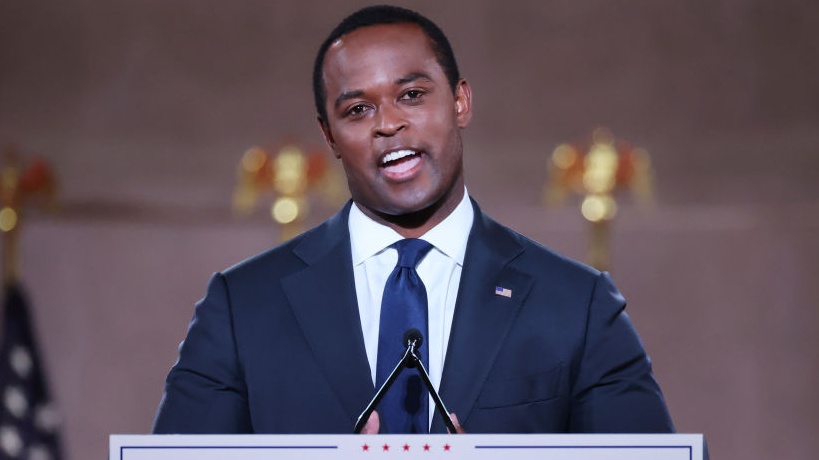Kentucky Attorney General Daniel Cameron held a press conference on Wednesday attempting to explain why the state would likely not be filing any charges against either of the police officers who shot Breonna Taylor to death on March 13.
Cameron said that sergeant Jonathan Mattingly and detective Myles Cosgrove were the two officers whose bullets struck Taylor. According to his office's investigation, Mattingly fired six shots and Cosgrove fired another 16, with six bullets hitting Taylor.
He added that an FBI ballistics team concluded that one of Cosgrove's bullets was the one that killed Taylor on March 13.
Despite the evidence showing Mattingly and Cosgrove boh shot Taylor, Cameron said both men were "justified in their use of force after being fired upon" by Taylor's boyfriend, Kenneth Walker.
He would not explain how it was possible that all of the officers' bullets hit Taylor but did not hit Walker, but he repeatedly said that under Kentucky state law the officers were justified in their actions.
When asked why manslaughter charges were not filed, the attorney general placed responsibility on the grand jury, saying his office handed over all of the evidence they found. He added that it is unlikely other charges would be pursued by his office after they walked the grand jury through every homicide offense.
He said he met with Taylor's family prior to the press conference and called the meeting "difficult" because he had to explain why no charges would be filed against any of the officers that shot Taylor to death.
"I know that not everyone will be satisfied. If we simply act on outrage there is no justice – mob justice is not justice… Do we really want the truth? Or the truth that fits our narrative?" he said, repeatedly highlighting that the decision was up to the grand jury and that he could only present the "evidence."
Earlier on Wednesday, his office announced that one of the officers involved in the raid on Taylor's home, ex-detective Brett Hankinson, would be facing three separate wanton endangerment charges for shooting into a nearby apartment, as Blavity previously reported.
"There is nothing I can offer today to take away the grief. What I can provide are the facts, which my office has worked hard to uncover," Cameron said at the beginning of his remarks.
Throughout the press conference, Cameron made a number of claims that have been disputed repeatedly in the press and by witnesses. Reporters challenged him on the assertion that police did identify themselves before breaking down Taylor's door, something Walker and nearly 12 other people in the apartment complex dispute, according to Vice.
Walker has said that he and Taylor repeatedly asked whoever was behind the door to identify themselves but never got an answer. New York Times reporter Rukmini Callimachi told Cameron that she interviewed multiple people who said they never heard officers identify themselves. But Cameron said a witness confirmed that he heard police identify themselves.
14. And of the nearly dozen neighbors we spoke to, only *one* said he heard them scream police – a truck driver who was on the staircase above her apartment, returning from a late shift. I asked Cameron if that is sufficient? To warn people in middle of the night that its police?
— Rukmini Callimachi (@rcallimachi) September 23, 2020
Cameron also said there was no bodycam footage, an assertion that has already been challenged since the release of crime scene photos showing at least one officer involved in the raid had on a bodycam and another had a holder for one on his vest.
Breaking: At least one of the officers involved in the raid on Breonna Taylor's apartment was wearing a body camera. And at least one more was pictured wearing a body camera holder after the raid https://t.co/SrxWGBYlZt
pic.twitter.com/VbKM9OQvqW— Roberto Aram Ferdman (@robferdman) September 4, 2020
Instead, Cameron's office had to piece together information from ballistics tests, 911 calls, police radio traffic and interviews. The Kentucky attorney general defended the months-long investigation and said the high-profile nature of the case necessitated that they take their time to do a "thorough" investigation.
His office finished their last interview in the case on Friday and presented the evidence to a grand jury heard on Monday. He refused to discuss the racial makeup of the jury as he stood in front of an all-white team of prosecutors who helped him conduct the investigation.
He went on to criticize "celebrities, influencers and activists" for talking about the case and trying to "influence" Kentucky residents.
Near the end of the press conference, Cameron said he would set up a task force that would look into how warrants are executed.
